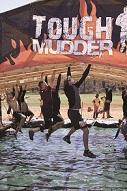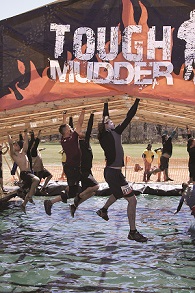
It’s easy to throw around the term economic impact. What’s more difficult is nailing down exactly how to calculate it and (with any luck) how to grow it. While no one can speak for every state or every event, it is possible to present some events as a microcosm of the sports industry, and to show how figures are captured.
throw around the term economic impact. What’s more difficult is nailing down exactly how to calculate it and (with any luck) how to grow it. While no one can speak for every state or every event, it is possible to present some events as a microcosm of the sports industry, and to show how figures are captured.
We’re aware that trips to Maine often leave a lasting impression on visitors, regardless of the reason for their travels to the state. Those who have had the chance to “put a pin” in the furthest Northeast corner of the country often develop deep-rooted connections to this place. Perhaps childhood travels included fishing at a lakeside cabin, a family road trip led to a first time on skis, a cottage highlight one summer brought the chance to sail on the Atlantic, or a photo album captured an autumn hike on the “toughest mile” along the famed Appalachian Trail.
Visits planned to this New England state specifically for sporting competitions also typically leave a lasting impression. Many participants putting Maine on their sports events calendar often coordinate a leisure trip around the competition. While the authenticity of this place leaves a positive imprint on the visitor, the events also generate a positive impact on the host destination: community interaction, the promotion of healthy lifestyles and the resulting economic ripple effect on towns and cities that have opened their doors.
Various community members join together to create a memorable experience to instill in those “from away” the desire to return to “Vacationland.” Tourism experts such as Convention and Visitors Bureaus, of which Maine has two – the Greater Bangor Convention & Visitors Bureau and the Portland Convention + Visitors Bureau, FreeportUSA, statewide Chambers of Commerce, hoteliers and innkeepers – can be utilized by event organizers to help shape a complete adventure.
Creating Long-Term Relationships with a Destination
As with many other states and cities, event stakeholders and organizers communicate their event “checklist” to their tourism associates in our state to help select an ideal site and event date factoring in seasonality, proximity to a natural asset, facility or venue as well as an airport and overnight accommodations as needed. And again, as with many other locations, visitors’ guides and suggestions for seasonal tours and activities can be offered; excursions for event staff, participants, fans and family can be pre-arranged. Often, when a partnership between an event holder and host destination is formed, the shared vision is to make that first-time event such a success that this will be just the beginning of a long-term, annual event for the community.
It’s easy for event owners and rights holders to work with cities and help build in additional economic impact that can benefit them both. Encouraging visits to an attraction, museum, shop or eatery contributes to the local economy and adds to the visitor experience. Ideas as to how to spend free time may also be offered at an onsite reception table, appear in print in an event program, or be shared spontaneously at a visitor center. Having the event owner or rights holder on board with encouraging local tourism goes a long way toward making the event profitable and fun for everyone.
Event organizers and stakeholders striving to measure economic impact ideally conduct onsite surveys or online surveys shortly after the competition. The data used to measure the “footprint” of participants, staff and spectators, can report on registration fees, services paid for contracted vendors, timing companies, event organizers, logistics teams and onsite emergency personnel. This spend is in addition to retail, restaurants, lodging, travel including airfare, vehicle rental, fuel and maintenance and out-of-pocket expenses by staff, officials and estimates of onsite media.
Numbers will also reflect monies spent in the area of recreation and entertainment: family-friendly attractions and amusement parks, ballgames and concerts, ferry boat, bus, and historical tours, as well as seasonal activities, such as the rental of sports-related equipment.
Case Studies: Sports Events and their Impact
Economic data captured for events held within the past four seasons illustrate the various participation numbers and impacts generated by event both small and large, hosted evolving, “homegrown” events to larger events. Data is not available for every event due in part to the size of the host organization, the ability to capture competitors spending and travel trends or access to economic calculators. The Maine Sports Commission, through a membership with the National Association of Sports Commissions, has access to the NASC online economic calculator and can offer support to event organizers within the state. The following events illustrate how event owners and rights holders worked together with the state to create positive economic impact and lasting relationships.
Some events come with their own economic impact calculators. Tough Mudder-The Great Northeast, an obstacle race held two consecutive years in Westbrook, attracted 7,068 ‘Mudders’ and 1,400 fans during its second year. The 2015 event brought in an estimated economic impact of $2,306,340 to the region. Calculations were streamlined due to Tough Mudder’s provision of comprehensive demographics reporting overnight accommodations, travel patterns, states of origin, size of parties, and monies spent.
The Tough Mudder data included participants’ income, the percentage of participants who had never traveled to Maine before, the high number of Mudders who plan to return to the area, and information that nearly half of the competitors stayed at overnight accommodations for this weekend event. These numbers were all captured in a post-event survey that had a 27 percent response rate.
The Dempsey Challenge presented by Amgen is a top-caliber fundraising, cycling and walking event held annually in Lewiston. Last year’s event drew 3,988 participants who raised over $1.2 million inclusive of 394 teams who raised a total of over $900,000. Of the close to 4,000 participants, 3,045 were runners or walkers, and 21 participants were part of the two-day ride with 367 running, walking or cycling on both days.
Part of the success of any event is the hours donated by volunteers: 1,128 people banded together to assemble a local organizing committee of 50. A large focus of this event is the fundraising aspect with 100 percent of the proceeds benefitting The Patrick Dempsey Center for Cancer Hope & Healing, established in 2008. The Center was founded by Maine native Patrick Dempsey in response to his mother, Amanda Dempsey’s courageous battle with cancer; Ms. Dempsey was a survivor who attended the event for many years until her passing. The Dempsey Challenge includes A Festival in the Park, Kids’ Fun Run and Survivors Run, activities which create an inviting atmosphere to participants of all ages. This race has grown to encompass cycling distances ranging from 10 to 100 miles, and a 5K and 10K walk, appealing to a broad community, increasing participation over this two-day weekend event. The partnerships formed by the Dempsey Center within Maine’s cancer community affiliated with leading edge research, early detection, treatment and emotional support are far-reaching and difficult to measure in value. The regional economic impact resulting from the 2015 Dempsey Challenge was $105,625.
The Dempsey Challenge provided the Maine Sports Commission with survey results in spreadsheet form and infographics, reporting dollars spent in various categories: hotels, restaurants, retail, entertainment (day and night), transportation expenses as well as demographics. This event is the reflection of an event that began as a community competition and festival that now welcomes people from 35 states and six different countries, utilizing three area hotels and establishments and growing in popularity every autumn.
BikeMaine is an annual event hosted by the Bicycle Coalition of Maine, a nonprofit organization comprised of 5,000 members “working to make Maine better through biking and walking.” BikeMaine 2013, the Coalition’s inaugural event, attracted 251 riders from 37 states and Canadian provinces and generating $235,000 in economic impact. 2014’s economic impact data rose to an estimated $395,000; this year’s economic impact was reported at $448,000, with proceeds going to support bicycling programming and advocacy initiatives made available through the Bicycle Coalition of Maine. This organization is a great model of the results of revenues raised going right back into educational program and advocacy funding.
The Lobsterman Triathlon, founded in 2002, has since been recognized as one of the top races in the country and has been featured in Men’s Health, Triathlete Magazine, Inside Triathlon, Competitor Magazine and Fodor’s Travel. Held annually in a coastal destination, Winslow Park, located in Freeport, the Lobster Tri historically attracts up to 900 competitors from 30 states and Canada. The Maine Cancer Foundation was named as the charitable partner in 2015; Lobsterman Triathlon encourages all involved to consider donating to, volunteering or raising funds for MCF, an organization that has made positive strides in improving cancer prevention, screening and outcomes throughout the state.
Promotion Strategies
Since a key component to the success of a sports event is high registration, ultimately leading to an increase in spectators and family members, organizers will typically find community partners equally committed to promoting the event. A team approach may be used to strategize a timeline of initial announcement, press release distribution, social media and media campaign. Discount codes help generate interest and encourage earlier registration; event organizers may engage with tourism associates to broadcast special rates during a certain timeframe. Another effective way to increase participation is by engaging with the local clubs, organizations and members of the organizing committee to help spread the word. By utilizing the combined voices of the community as well as the CVBs, chambers of commerce and the sports commission, awareness of an event will be heightened contributing to the economic benefit to the host region.
Ancillary Events
Another component helping to generate higher participant numbers and create an even better value for attendees is the creation of ancillary events; “fan fests” held indoors or out can attract people to an event may get increased media attention around the event and be attractive to those who may not have otherwise attended. Pro-Am competitions will frequently be arranged by event stakeholders. This is an effective way to engage local organizations and clubs affiliated with the sport, while increasing awareness around the popularity of the sport. Demonstrations can be conducted to get community members to try their hand at a new sport. Any of these events also create the opportunity to engage sponsorships to add revenue to the event, helping offset event logistics costs, increasing donations for a chosen charitable organization.
Sometimes, it’s essential to look at what the area offers and promote it to incoming sports tourists in the effort to capture their imagination and give them a special memory. In Maine, three seasons of water sports, including kayak, canoe and stand up paddleboard, are possible. Whale watching also creates a memorable adventure, as does fishing. As with other cities and states, lodging packages can be leveraged through a variety of resorts, campgrounds and motels.
If all else fails, we like to encourage visitors to spend a little time in pursuit of something that makes us unique – and makes their visit (and by extension, their sports event) especially memorable – moose sightings. They’re more common on the remote lake regions, and it gives visitors a great reason to spend an extra day or two in our area.
Not every destination has a moose, but every destination has something that makes it unique, encourages people to return, and of course, to stay. Event owners and rights holders who want to put in the time can find these things and encourage their participants to seek them out. It all creates to the bigger picture that is economic impact, and sports tourism as well.

